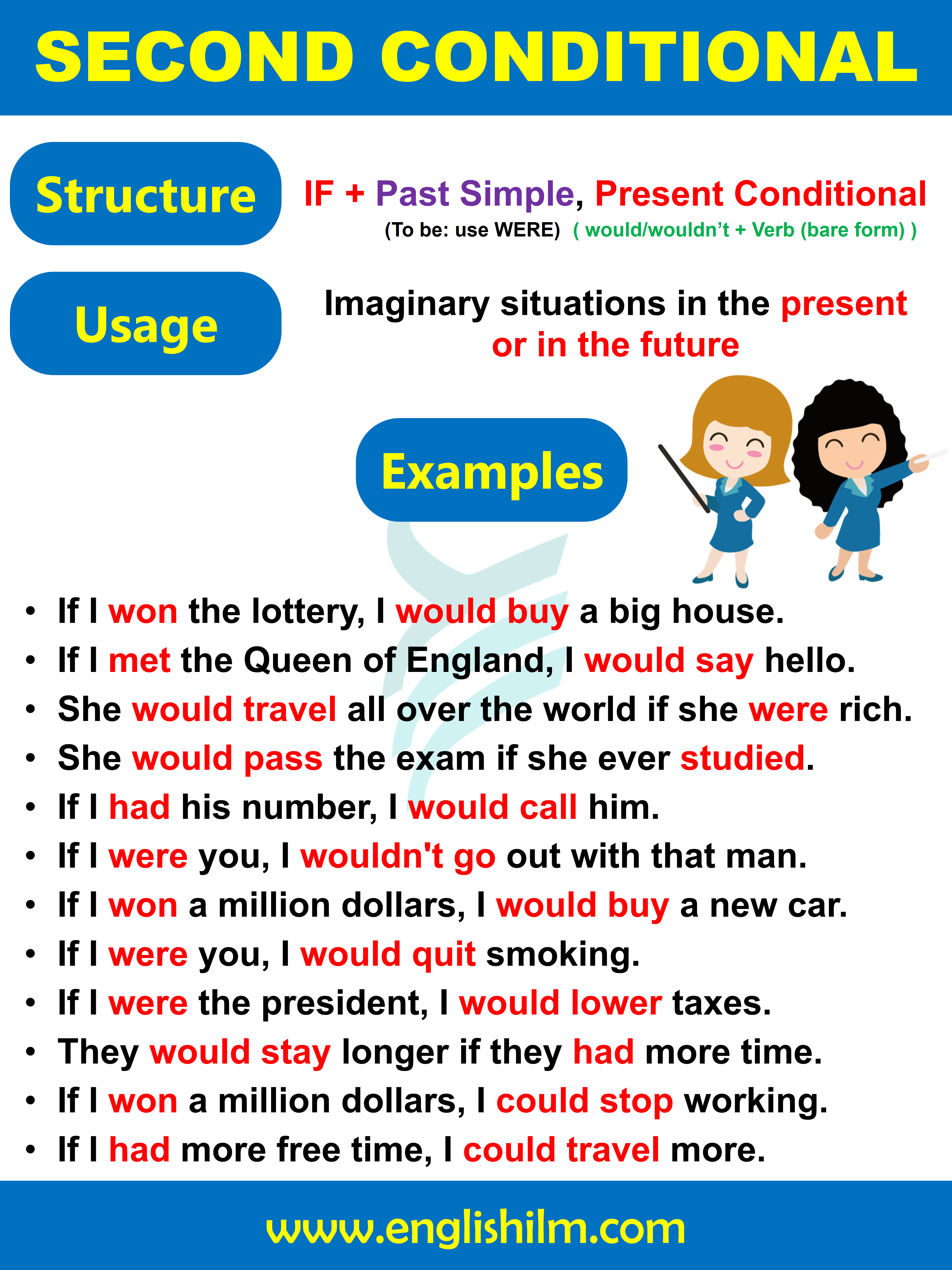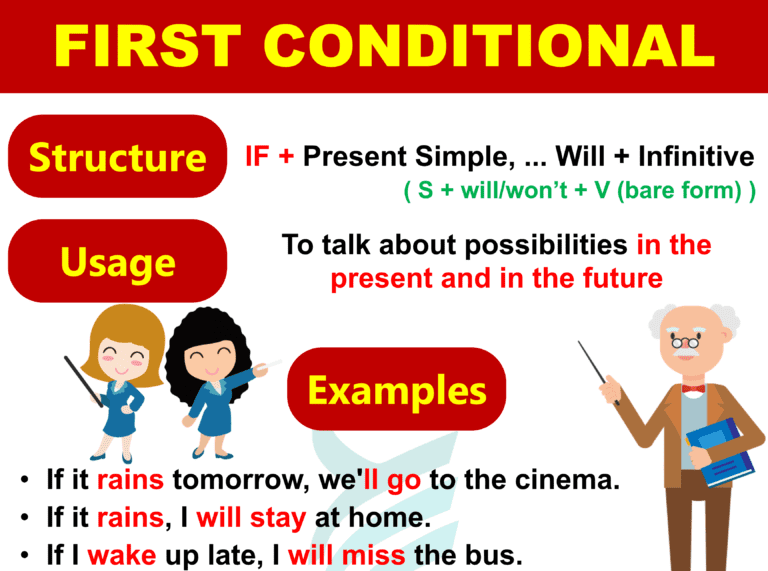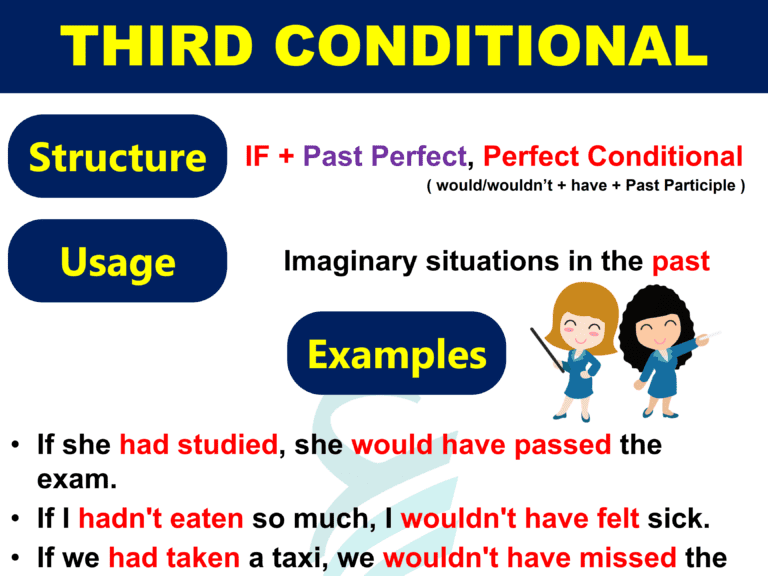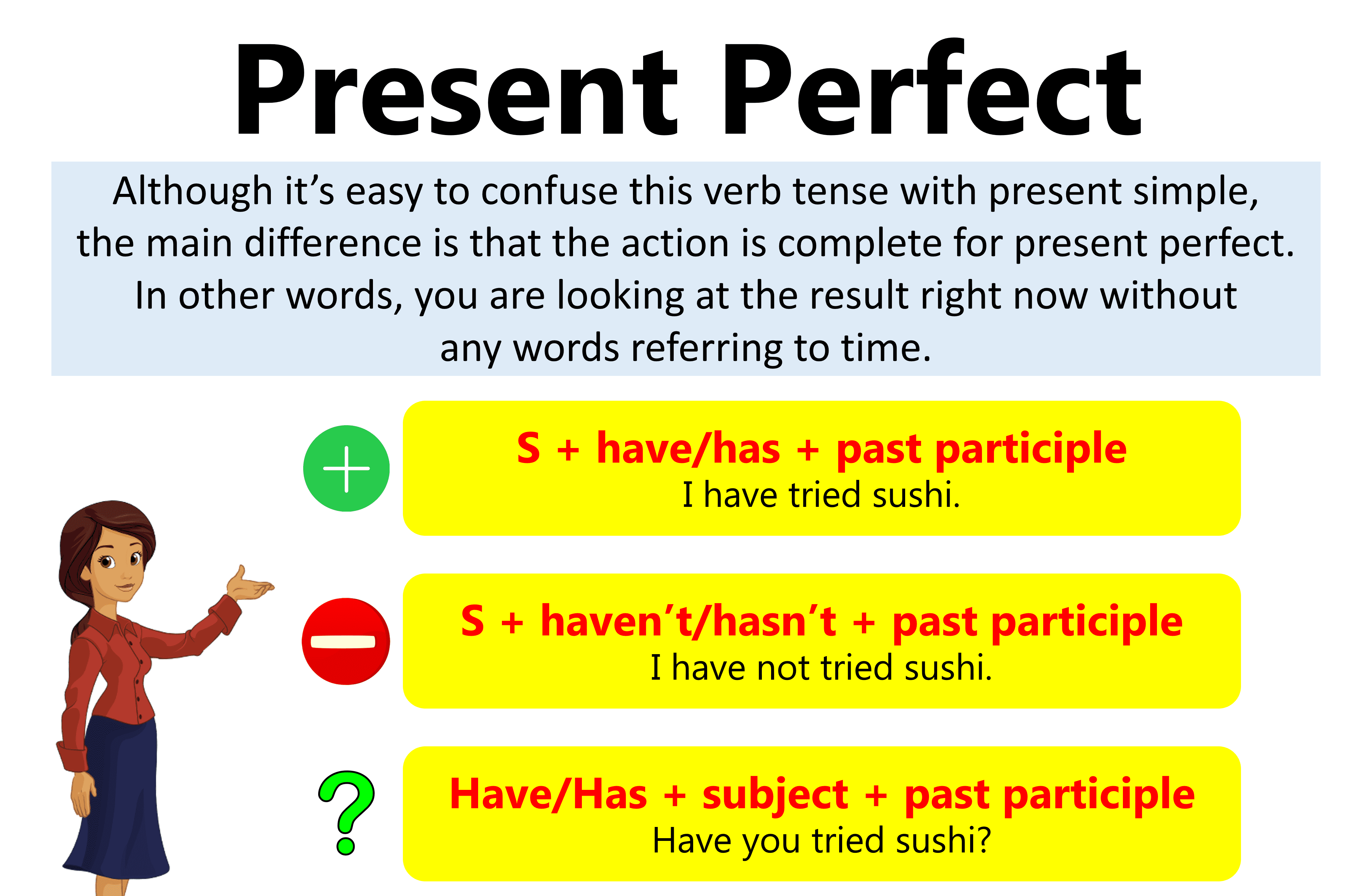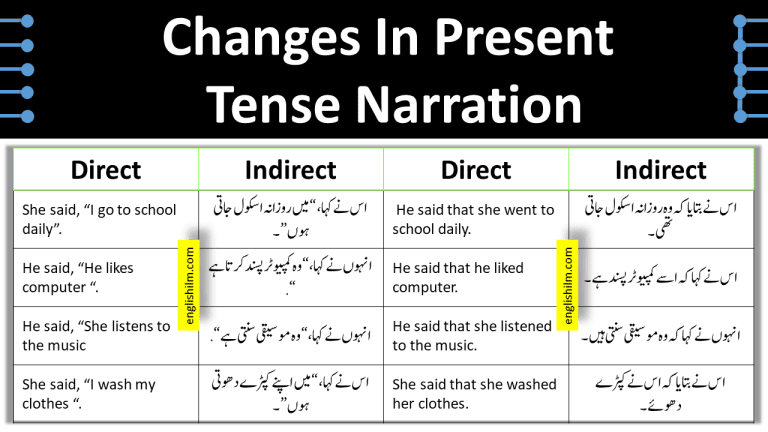The second conditional is a sentence structure used to talk about hypothetical situations and their possible results. It helps you express things that are unlikely or imaginary in the present or future. In this blog post, you will learn how to form second conditional sentences and understand when to use them in English. Mastering this grammar rule will improve your ability to speak and write about unreal situations clearly and correctly.
Definition of Second Conditional
Like a first conditional, a second conditional sentence consists of two clauses: an ‘if‘ clause and the main clause. We use different verb forms in each part of a second conditional:
- If I won a million dollars, I would buy a new car.
Note that this past simple form is slightly different from usual in the case of the verb BE. Whatever the subject, the verb form is were, not was.
Second Conditional Examples:
- If I were you, I would quit smoking.
- If I were the president, I would lower taxes.
If the “if” clause comes first, a comma is usually used. If the “if” clause comes second, there is no need for a comma.
For example:
- They would stay longer if they had more time.
Sometimes it’s possible to use “should”, “could”, or “might” in place of “would”.
For example:
- If I had more free time, I could travel around the world.
- If I won a million dollars, I could stop working.
How to Use the Second Conditional
The conditional sentence type 2 is used to talk about things that are unreal (not true or not possible) in the present or the future – things that don’t or won’t happen.
For example:
- If I had a car, I would drive it every day.
Second Conditional Sentences Chart
Related Lessons:


